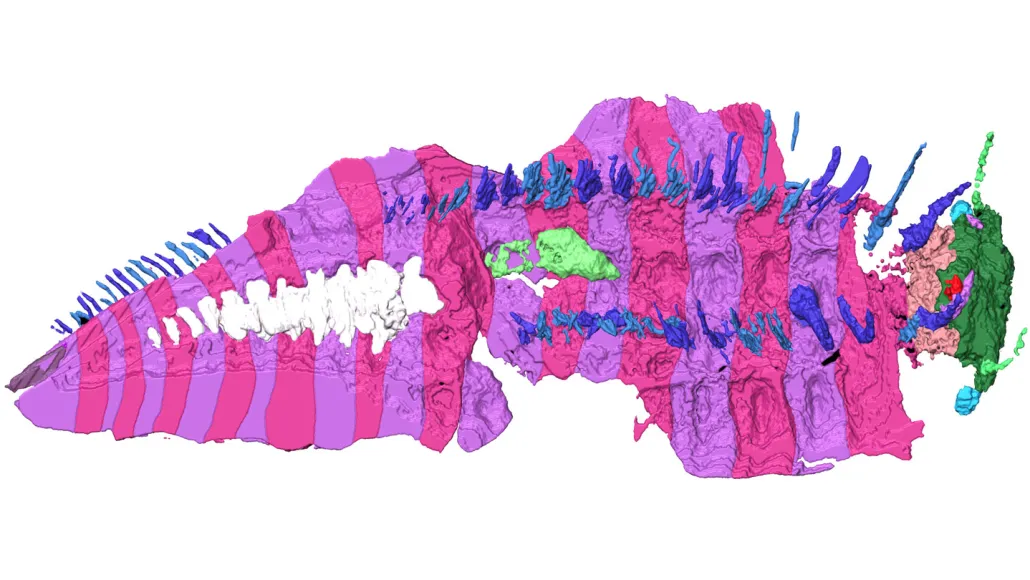Scientists have been looking for Arthropleura’s fossilized head for over 100 years
Two newly discovered fossils are shedding light on the anatomy of the largest arthropod ever—Arthropleura, a colossal millipede-like creature that once grew longer than a king-sized bed and roamed the Earth between 346 million and 290 million years ago.
Although Arthropleura was first identified in 1854, paleontologists had been unable to find a fossil that included the head—until now. “It took over 100 years of searching, and we’ve finally found one,” says Mickaël Lhéritier, a paleontologist at Claude Bernard University Lyon 1 in France. Micro-CT scans of the fossils, which were discovered in present-day France, reveal details never seen before, such as the creature’s antennae, eyes, mandibles, and feeding appendages, according to an October 9 report in Science Advances.
Scientists had long assumed that Arthropleura had a head similar to modern-day millipedes. However, these fossils suggest a more intermediate evolutionary stage. “Arthropleura has the body of a millipede, with two pairs of legs per body segment, but its head is more like that of a centipede,” Lhéritier explains, highlighting the centipede-like mouthparts. Despite these differences, Lhéritier’s team maintains that Arthropleura belongs in the millipede lineage based on anatomical observations and phylogenomic data.
While the new fossils offer a treasure trove of insights, many mysteries about Arthropleura remain unsolved. For example, scientists are still unsure what it ate or whether it lived on land, in water, or in both environments. The discovery of stalk-like eyes—similar to those of crabs—hints at a possible aquatic lifestyle, Lhéritier says.
Moreover, researchers are left to wonder whether both male and female Arthropleura grew to such gigantic proportions and how long it took juveniles to reach their massive adult size. With every new discovery, this ancient giant reveals more about its fascinating life, but there’s still much more to uncover.
